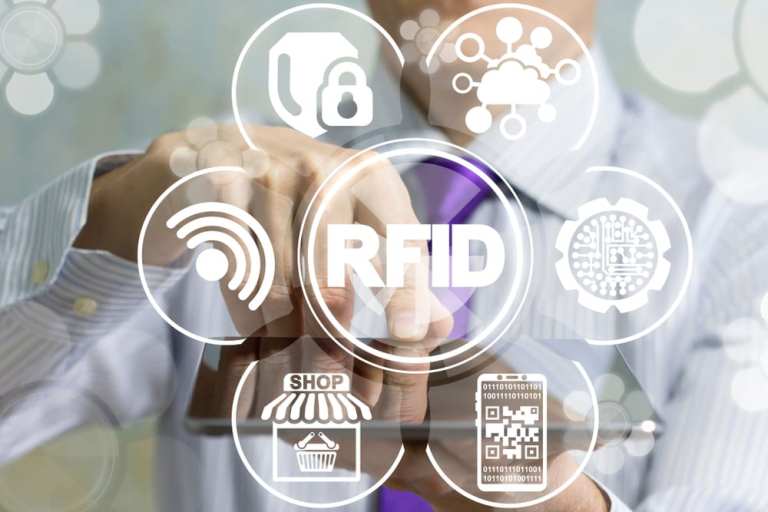RFID Steps Up As A Retail Innovation Tool

Radio-frequency identification (RFID) technology is carrying more weight in retail these days, helping merchants to innovate and win over consumers, and even serving to tie together web, mobile and in-store experiences as part of the focus on omnichannel commerce.
One of the latest examples comes from Outdoor Voices.
The eCommerce operator and DTC brand reportedly is expanding its physical retail footprint and “modernizing its omnichannel experience for its store associates — and customers,” according to AdWeek. Part of that effort involves RFID labels “so that counting inventory (and then keeping an up-to-date view as to what items can ship out from different stores) becomes much easier. Outdoor Voices has 99 percent inventory accuracy — and with this labeling, customers can bring in items without receipts and store associates can still see when and who bought the item. (The tags can also function as anti-theft devices.)”
Treasure Hunt
Probably every shopper knows the thrill of the retail treasure hunt — that odd, unexpected, but perfect product discovered on a shelf; that highly desired item almost hidden in some corner, but found via serendipity or determined effort. Probably every shopper also knows the frustration of the hunt — the time-consuming, wasted effort to locate a shirt or skirt in a specific color or size; an item that’s supposed to be on the retail floor, according to inventory software, but is nowhere to be found.
That’s where RFID technology can also help with retail.
In a recent PYMNTS interview, for instance, Spencer Hewett, CEO of RADAR, which sells inventory management technology based on RFID, spoke with Karen Webster about how those tools could significantly change the in-person store experience. RADAR has just started its work, kicking things off with three vertically-integrated U.S. apparel retailers — with data and lessons about its fledging effort a ways off. Yet, Hewett offered a vision in which these initial RFID inventory moves could clear a path toward more autonomous checkout for retail.
RADAR is targeting apparel retailers for the initial deployment of this RFID technology, Hewett gave an example of one apparel store where 25 percent of the items were missing from the sales floor. Sure, some shoppers really do like the treasure hunt, but most of them have limited patience. If a consumer cannot find the desired item, he said, “55 percent of them will leave and not ask employees for help.”
So, how exactly does all this work?
RADAR installs RFID sensors on a store’s ceiling, with the work being done overnight, Hewett said. Each sensor has a 360-degree view, and covers about 500 square feet of retail space. Those sensors pick up RFID signals from each product, with information relayed back to sales associates via a mobile app provided by RADAR. Those signals produce real-time location data — they can tell when a product is on the move (say, from a rack to the fitting room), and if a product isn’t where it’s supposed to be, enabling quick action from store employees, and lessening the risk of frustrated shoppers and lost sales.
The overall point, he said, is for the retailer “to run a tight supply chain,” one that eliminates the gaps in the order replenishment process.
Concert Commerce
RFID also promises to play a bigger role in summer retail this. year — that includes at big outdoor music fests, via concert ticketing and purchasing wristbands with RFID. In another recent PYMNTS interview, Carlo Chiarello, CEO of Intellitix, talked about the ins and outs of providing contactless payments and access control not only at summer outdoor concerts, but at a host of other events, including trade shows, conferences and food and beverage gatherings.
“I’m a big believer that there is still a tremendous amount of opportunity” for such wristbands and badges, “and not only for music. It’s much broader than that.” Not only that, but when asked about where RFID wristband payments stand – that is, how much the technology has developed and gained mainstream use — Chiarello said “there is still a lot of runway.”
Bet on this — retailers will turn more often to RFID for not only inventory but for other tasks as well.